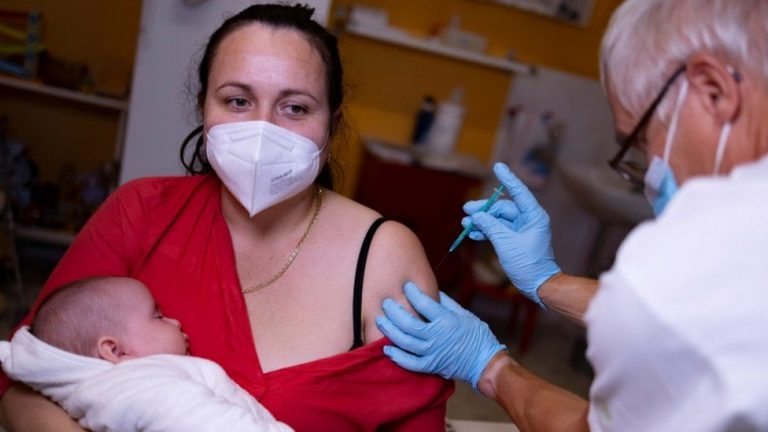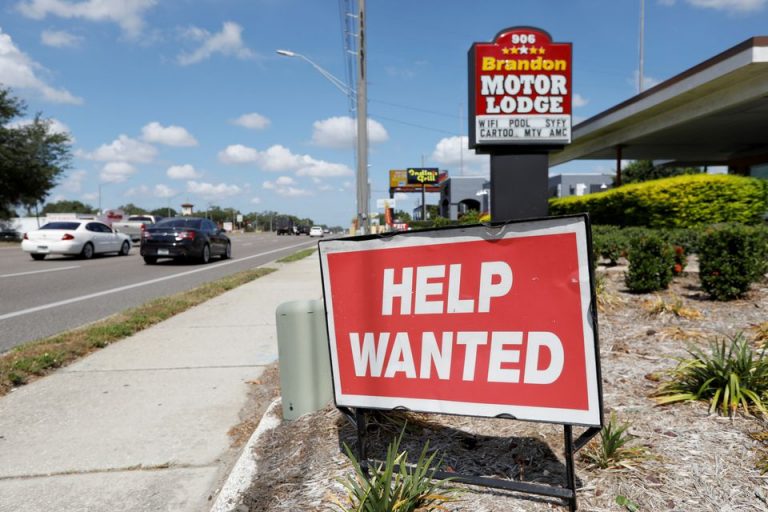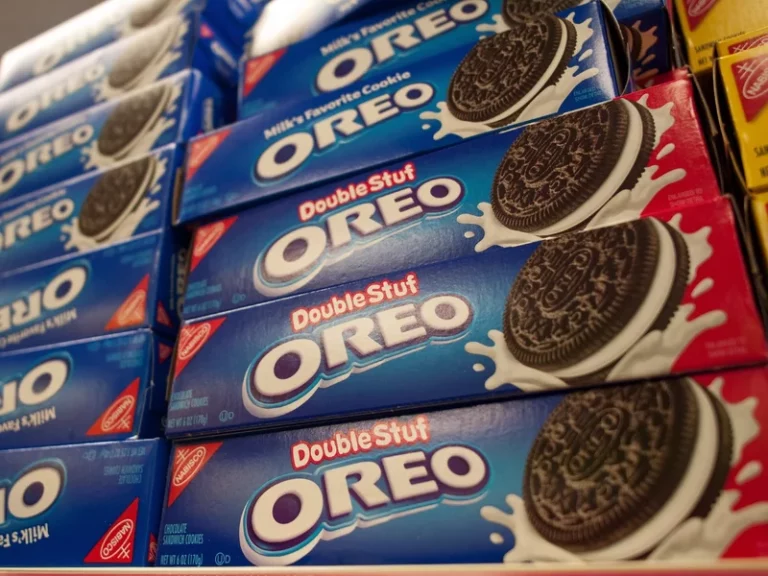As they pass through the Valley of Baka, they make it a place of springs; the autumn rains also cover it with pools. – Psalms 84:6, NIV
GA public schools saw growth in pre-K, kinder and high school freshman
Enrollment in Georgia’s public schools recovered this fall after a steep drop last year, with gains centered mostly among younger incoming students amid small declines in other grades.
Statewide enrollment fell marginally in most grades, with the sharpest drop, 3%, in sixth grade, according to data recently posted by the state department of education. The declines were offset by growth in pre-kindergarten and kindergarten. Each of those class levels swelled by about 7% after falling precipitously last year amid the havoc of COVID-19.
Georgia also saw a bumper crop of high school freshmen this year: That grade level spiked by 8% after falling a little last year.
Cobb County saw 10% gains among freshmen and kindergartners, with drops in most other grades. DeKalb County had 12% more freshmen and nearly 16% more kindergartners. Fulton County had 3% more freshmen and a 10% larger kindergarten class.
Gwinnett County, the state’s largest school district with roughly a tenth of the state’s enrollment, deviated from the norm, with growth in most grade levels.https://0797c6e8353fbe1e3685b8ad94499a77.safeframe.googlesyndication.com/safeframe/1-0-38/html/container.html
The 0.6% enrollment growth statewide follows a 2.2% drop last year, as the pandemic continued to disrupt in-person learning and kindergarten enrollment plummeted nearly 10%.
Enrollment is checked each October and March, with 1,740,812 students counted last month.
That is up just 3.3% from October 2011. By comparison, enrollment grew 14.5% the decade before that.
[VIDEO] Abba release their first studio album for 40 years, ‘Voyage’
As Abba release their first studio album for 40 years, Voyage, Benny Andersson and Bjorn Ulvaeus speak to the BBC about being compared to their old music and why you won’t be seeing Agnetha and Anni-Frid.
-BBC
North Korea is going hungry as winter comes
Getting information out of North Korea is increasingly difficult. The border has been closed since January last year to prevent the spread of Covid-19 from China. Even getting messages out of the country to family and friends who have defected to South Korea comes at a huge risk.
North Korea has always struggled with food shortages, but the pandemic has made a bad situation worse. Leader Kim Jong-un has compared the current situation to the country’s worst disaster in the 1990’s, known as the “Arduous March”, where hundreds of thousands of people died in a famine.
The situation is not thought to be that bad – yet. There are some hopeful signs. North Korea appears to be preparing to re-open the border with China, but it’s unclear how much trade and aid will be needed to repair the economic damage already wrought on the impoverished country.
This year’s harvest is crucial. Last year’s crops were partly destroyed by a series of typhoons. The United Nations estimates that the country is short of at least two to three months’ supply of food.
To ensure this year is as successful as possible, tens of thousands of people have been sent into the fields to help gather rice and corn, including the army.
Kim Jong-un has also reportedly ordered that every grain of rice in the country is to be secured and that everyone who eats should go and help with the harvest.
This growing concern has been amplified by state media, which has highlighted measures being taken to prevent crop damage and released propaganda posters emphasising efforts to work on food production.
North Korea is facing two major issues with its food supply.
The first is its farming methods. Pyongyang may have invested in new military technology and missiles, but it lacks the modern machinery needed for a speedy and successful harvest, according to experts.
But along with the lack of technology and farming supplies, North Korea is facing a much longer-term problem if it wants to secure its food supply.
The country has been listed by US intelligence agencies as one of 11 countries most vulnerable to the effects of global warming, and the limited area it has to grow crops could be the hardest hit.
North Korea worked with the United Nations Environment Programme (UNEP) on detailed country reports in 2003 and 2012, and is also a signatory to international treaties including the Kyoto Protocol and the Paris Agreement.
One reason for this engagement on climate change may be its impact on food production.
The 2012 UNEP report noted that the average temperature in North Korea increased by 1.9°C between 1918 and 2000, among Asia’s fastest warming rates.
According to a 2019 Green Climate Fund report, annual average temperatures in North Korea are further expected to rise by 2.8-4.7°C by the 2050’s.
-BBC
WHO warns ‘Europe is back at the epicenter’ of COVID-19
The World Health Organization warned Thursday about rising COVID-19 cases and deaths in Europe. In the past week alone, the Europe region saw 1.8 million new COVID-19 cases and 24,000 deaths, or 59 percent of global cases and nearly half the world’s coronavirus deaths. “If we stay on this trajectory, we could see another half a million COVID-19 deaths in Europe and Central Asia by the first of February next year,” warned WHO Europe chief Dr. Hans Kluge.
Kluge said if 95 percent of Europeans just wore masks in public, 188,000 lives could be saved in the next three months.
Eight of the 53 countries in the WHO’s European region have vaccinated more than 70 percent of their population, but two have immunized less than 10 percent. The worst outbreaks are in Russia, Ukraine, and elsewhere in low-vaccination Central and Eastern Europe. Germany, with 67 percent of its population fully vaccinated, recorded a pandemic-high 33,949 new COVID cases on Wednesday.
Spain, with about 80 percent of its population fully vaccinated, is one of the few European countries not seeing a rise in infections. But Italy saw a 16.6 percent increase in cases over the past week, despite 72 percent of its population fully immunized, a national health pass, and stringent new rules requiring workers to be vaccinated or test negative for COVID-19.
Cases have declined sharply in the U.S. over the past six weeks. But Dr. Mike Ryan, a WHO official in Europe, warned that Europe’s experience is a “warning shot for the world.”
Kristen Stewart Is the Richest Actress 2021
Long before we came to know her as Isabella “Bella” Swan on Twilight, Kristen Stewart was working as a child actor for years on commercial and television sets.
By age 9, Kristen was cast in her very first film, 2000’s The Flintstones in Viva Rock Vegas, as an extra. Her other early work included her role in 2002’s Panic Room, where she starred as the daughter of Jodie Foster’s character, and her first leading role in the 2004 movie, Catch That Kid. The role quickly led to more acclaim for Kristen—which also meant even bigger gigs like 2004’s Speak and Into the Wild in 2007.
Of course, none of these roles caused quite the same cultural moment as Kristen Stewart’s breakout as Bella Swan in the Twilight series, which was based on the series of young adult novels by the same name. The franchise released five films over the course of four years, beginning with 2008’s Twilight and concluding with 2012’s Twilight: Breaking Dawn. Kristen’s role in the film effectively catapulted her career to new heights—and it earned her one of her prettiest paychecks to date.
So, how much was Kristen Stewart paid, exactly?
What is Kristen Stewart’s salary for Twilight?
Kristen Stewart starred in all five films of the Twilight saga: including 2008’s eponymous Twilight, 2009’s New Moon, 2010’s Eclipse, 2011’s Breaking Dawn: Part One and Breaking Dawn: Part 2, released in 2012. According to Celebrity Net Worth, Kristen received a salary of $2 million for the first installment of the Twilight series. However, her pay increased wildly by the time she starred in the final two Twilight movies, making a reported $25 million for both films (around $12.5 million each).
This doesn’t even include a reported 7.5 percent in backend earnings from the total gross box office fees for the films. With Twilight: Breaking Dawn Part 1 making $712.2 million in box office earnings and Twilight: Breaking Dawn Part 2 bringing in nearly $830 million at the box office, this puts Kristen’s reported backend earnings at around $53 million and $62 million for Breaking Dawn Part 1 and Breaking Dawn Part 2, respectively.
What is Kristen Stewart’s net worth in 2021?
According to Celebrity Net Worth, Kristen Stewart’s net worth in 2021 is estimated to be $70 million. This makes her the richest actress to play Princess Diana compared to stars like Noami Watts, who is worth $35 million and The Crown’s Emma Corrin, who is worth $1 million. Kristen Stewart’s net worth is made up of her earnings throughout her long career in film and television, including her salaries from aforementioned films like the Twilight saga, Panic Room and, of course, Spencer.
Kroger “Bitcoin Cash press release was fraudulent”
American grocery store chain Kroger has denied claims that it is accepting cryptocurrency payments.
The major retailer said that a press release stating it would accept Bitcoin Cash (BCH) at all of its stores, as well as for online purchases, was a hoax.
According to Reuters, Kroger is the second retailer to recently fall victim to such a scam.
Kroger has previously dabbled in the cryptocurrency space; in 2020, the firm began to offer Bitcoin (BTC) rewards at its store through crypto-based rewards platform Lolli.
Crypto has gradually found its way into the grocery store vertical in various forms. In 2019, Safeway — another major American grocery chain — began offering Bitcoin rewards through Lolli, similar to Kroger.
Cryptocurrencies’ underlying blockchain technology has also been slated to play an important role in the grocery industry. A 2019 study by research firm Gartner predicted that 20% of the top 10 global grocers will be using blockchains by 2025.
U.S. employment increased in October; worker shortages persist
U.S. employment increased more than expected in October as the headwind from the surge in COVID-19 infections over the summer subsided, offering more evidence that economic activity was regaining momentum early in the fourth quarter.
The Labor Department’s closely watched employment report on Friday still showed, however, that worker shortages persisted even after federal government-funded unemployment benefits expired in early September and schools fully reopened. The labor force participation rate was flat.
Still, the broad-based gain in employment added to rising consumer confidence and services sector activity in painting a more favorable picture of the economy, after the Delta variant of the coronavirus and economy-wide shortages of goods restricted growth in the third quarter to its slowest pace in more than a year.
Nonfarm payrolls increased by 531,000 jobs last month, the survey of establishments showed. Data for September was revised higher to show 312,000 created instead of the previously reported 194,000. Economists polled by Reuters had forecast payrolls rising by 450,000 jobs.
Employment is 4.2 million jobs below its peak in February 2020. Job growth has averaged 582,000 per month this year.
Leisure and hospitality businesses led the increase in hiring last month, with 164,000 jobs created. Payrolls also rose in the professional and business services, transportation and warehousing, healthcare, wholesale trade, financial activities as well as mining sectors.
Manufacturing added 60,000 jobs, with 28,000 of the positions at motor vehicle manufacturers. Construction payrolls increased by 44,000 jobs.
But state and local government education shed 65,000 jobs. The government said pandemic-related staffing fluctuations in education have distorted normal seasonal patterns, making the changes in employment in the sector challenging to interpret. Shortages of bus drivers and other support staff have been well documented. Overall government payrolls fell by 73,000 jobs.
MILLIONS REMAIN HOME
Details of the smaller survey of households were also upbeat, with strong employment gains. The unemployment rate fell to 4.6% last month from 4.8% in September. Though 104,000 people entered the labor force last month, millions remained outside, making it harder for employers to fill 10.4 million jobs which were open as of the end of August.
The labor force participation rate, or the proportion of working-age Americans who have a job or are looking for one was unchanged at 61.6%. It has remained within a narrow range of
61.4% to 61.7% since June 2020. About five million people have left the labor force since the pandemic started.
The number of people unemployed for 27 weeks or more dropped 357,000 to 2.3 million. They accounted for 31.6% of the 7.4 million people officially unemployed last month.
The labor market disconnect has been blamed on caregiving needs during the pandemic, fears of contracting the coronavirus, early retirements, massive savings and career changes as well as an aging population and the recently ended expanded unemployment benefits. With many people who moved out of cities during the pandemic yet to return, there could also be a mismatch between the open jobs and location.
Swiss skiers to miss World Cup races due to vaccine mandate
Two Swiss skiers that do not want to be vaccinated against the coronavirus will miss the first men’s downhill race of World Cup ski season in Canada because the country requires international visitors to have two doses to enter.
Swiss teammates Urs Kryenbühl and Ralph Weber posted social media messages on Thursday saying they had recovered from COVID-19 infections and do not want to be vaccinated ahead of the races in Lake Louise, Alberta, on Nov. 27-28.
Team leaders were cautioned at a pre-season online meeting by International Ski Federation officials that double vaccinations were the best solution to avoid travel issues in Canada and elsewhere this season.
Any men’s downhill skier who is not vaccinated and wants to compete at the Beijing Games likely must skip the sport’s signature World Cup races in mid-January to be eligible for the Olympics. The Swiss resort of Wengen and the Austrian resort of Kitzbühel are each scheduled to stage two downhills between Jan. 14 and 22. The Olympic men’s downhill is scheduled for Feb. 6.
Neither Kryenbühl nor Weber has previously raced at the Winter Olympics. Kryenbühl is a stronger contender for Beijing after two third-place finishes in World Cup downhills last season.
“I have personally made the decision not to have a vaccination at the moment,” wrote the 27-year-old Kryenbühl, who said he had COVID-19 several months ago.
Weber wrote he was infected just a few weeks ago with symptoms including fever, fatigue and loss of smell and taste.
Both said they expect to make their season debuts in Colorado. The Beaver Creek resort will stage a downhill and two super-G races from Dec. 3-5.
Oreos, and other snacks will get more expensive
Mondelēz International, the company behind snacks including Oreos and Sour Patch Kids, announced in a call with investors that U.S. customers can expect prices for their products — including Chips Ahoy! cookies, Ritz crackers and Toblerone chocolate — to increase by 6-7% beginning in the new year.
In a statement to NPR, the company said it’s seeing inflation in many markets — particularly in North America — and it expects that to continue into next year. “This is due to the cost of commodities, transportation and packaging,” it said, adding that labor shortages are also a factor.
But despite higher prices, the company says the demand for snacks has not diminished — the pandemic may have even increased it.
Mondelez isn’t the only company to boost prices in response to increasing costs and other factors. Unilever — which makes products including Dove soap, Lipton tea and Klondike bars — announced price increases of around 4% last month. And McDonald’s expects to raise its menu prices by 6% this year.


![[VIDEO] Abba release their first studio album for 40 years, ‘Voyage’ [VIDEO] Abba release their first studio album for 40 years, ‘Voyage’](https://globalnewst.com/wp-content/uploads/2021/11/p09vb6nz-768x432.jpg)






